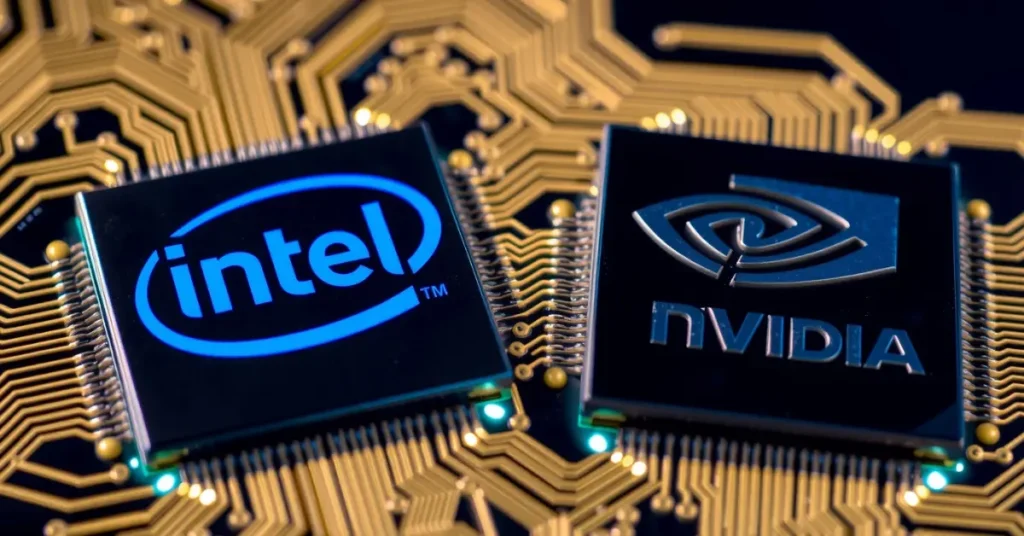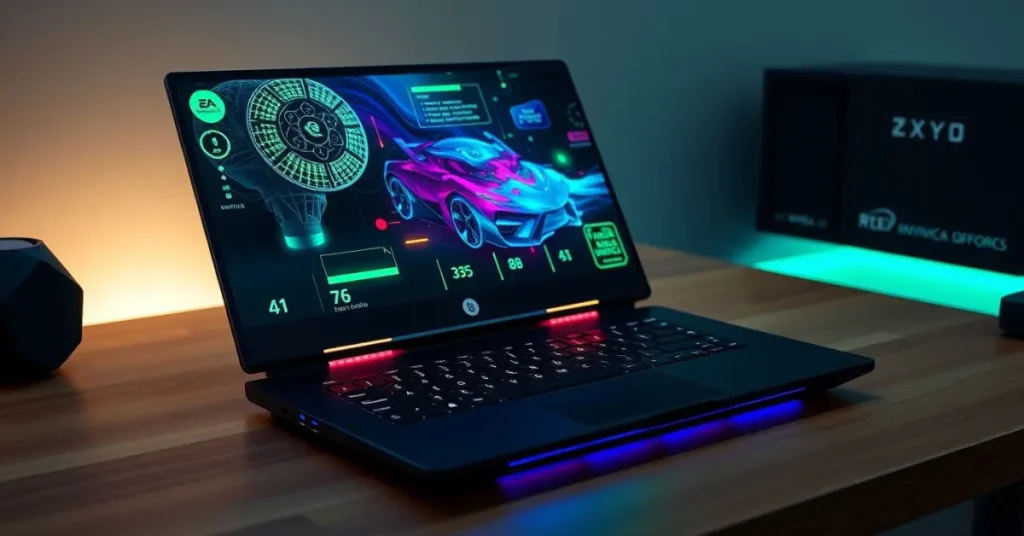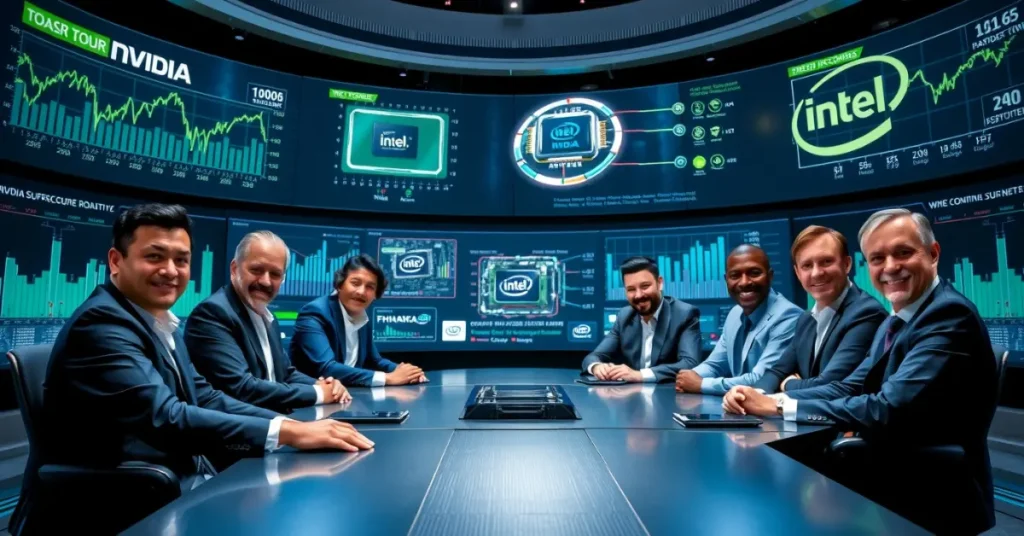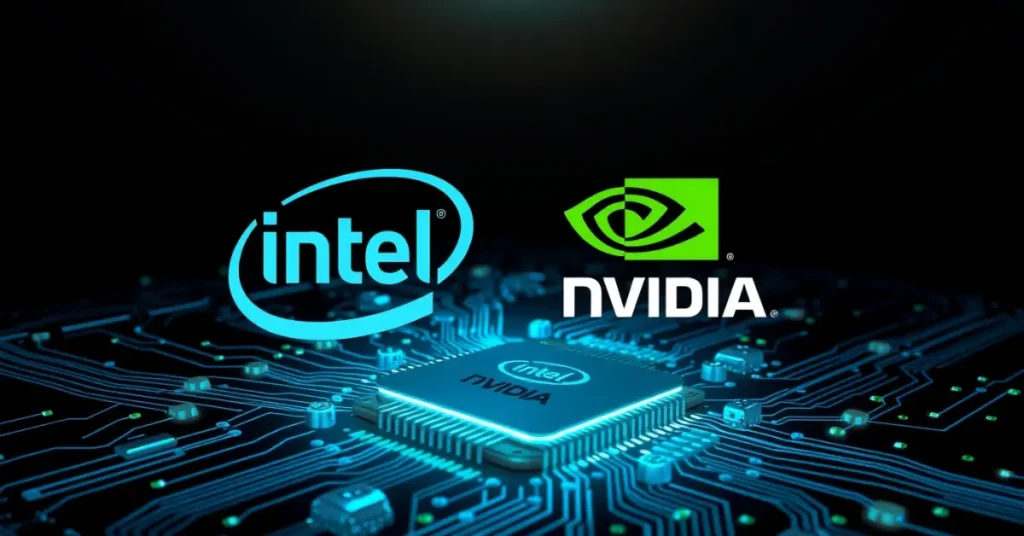Table of Contents
Nvidia to invest 5Bn Dollars in rival Intel.: A $5 billion strategic alliance between Nvidia and Intel has the potential to dramatically alter the competitive dynamics within laptop and data center semiconductor markets. Intel’s commanding presence in mobile processing combined with Nvidia’s overwhelming dominance in discrete graphics creates an alliance positioned to significantly influence the technology landscape. Though information continues to surface, questions remain regarding the partnership’s future trajectory and consequences, especially for competitors like AMD and Qualcomm. Mercury Research data indicates Intel maintains approximately 80 percent of the mobile processor sector, while Nvidia controls 94 percent of the discrete graphics chip market.
This collaboration will deliver co-developed semiconductors across consumer, gaming, educational, and creative professional segments. Multiple product generations are currently in development, with both organizations emphasizing that this initiative enhances rather than substitutes Intel’s existing strategic plans. Although integration specifics await finalization, industry observers are monitoring the agreement closely for its potential impact on competitors and the semiconductor sector overall.

Nvidia and Intel’s collaboration to deliver high-performance laptops
Nvidia’s intentions to penetrate the PC processor arena have been subject to ongoing industry speculation, with discussions around whether the company might develop proprietary chips or forge partnerships with established players. This Intel agreement doesn’t eliminate such possibilities but provides Nvidia with a substantial entry point into PC markets through CPU integration. The financial commitment corresponds with government-supported initiatives for Intel and may influence the company’s strategic direction. Nvidia CEO Jensen Huang observed, “We were delighted to be a shareholder, and we’re delighted to have invested in Intel, and the return on that investment is going to be fantastic, both, of course, in our own business, but also in our equity share of Intel.”
The collaborative strategy mirrors an earlier initiative: the Kaby Lake-G processor, which merged Intel CPUs with AMD GPUs. Despite achieving technical milestones, the project eventually failed due to insufficient driver support. According to an industry source, the current partnership “opens up every socket Intel owns to Nvidia IP.” This development generates questions about Nvidia’s GPU contribution levels, architectural selections, and market implications.

Industry Impact and Competitive Landscape
The integration strategy centers on linking Nvidia and Intel technologies through Nvidia NVLink connectivity. Company representatives stated, “The companies will focus on seamlessly connecting Nvidia and Intel architectures using Nvidia NVLink.” Although NVLink has primarily served data center applications, the industry shows growing interest in its applications for tightly integrated AI, gaming, and professional workstation laptops.
Industry analyst Pat Moorhead observed, “On PC, a high performance notebook with tightly-coupled Intel+NVIDIA seems strong for AI, gaming and workstation,” adding, “While deets are slim, it’s interesting to think about multi-GPU configs (are we back?).”
This move could reshape how AMD, Qualcomm, and other chipmakers position themselves in the market. If successful, Intel may regain momentum in CPUs while Nvidia strengthens its dominance in GPUs, creating significant pressure on rivals.

Future Outlook and Strategic Opportunities
Product development encompasses multiple generations, focusing on premium devices across diverse market segments. An informed source familiar with Intel operations revealed, “Nvidia and Intel had been in contact about a similar partnership when Pat Gelsinger was still the company’s chief executive, as a way of bringing in additional funding.” Huang has also verified, “Huang confirmed that talks began a year ago.” Nvidia to invest 5Bn Dollars in rival Intel.
Looking ahead, the Nvidia–Intel partnership has the potential to fuel innovation in AI, high-performance laptops, and data center solutions. While integration challenges remain, this strategic alliance may pave the way for transformative opportunities across consumer and enterprise markets.

Frequently Asked Questions (FAQs) About Nvidia to invest 5Bn Dollars in rival Intel
Why is Nvidia investing $5 billion in Intel?
Nvidia is investing $5 billion in Intel to strengthen collaboration on high-performance CPUs and GPUs. This partnership aims to enhance innovation in laptops, data centers, and AI markets. Nvidia to invest 5Bn Dollars in rival Intel.
How will the Nvidia–Intel alliance affect the semiconductor industry?
The alliance could reshape the competitive landscape by combining Intel’s dominance in mobile processors with Nvidia’s leadership in discrete graphics, putting pressure on rivals like AMD and Qualcomm. Nvidia to invest 5Bn Dollars in rival Intel.
What products will come from the Nvidia and Intel collaboration?
Both companies plan to co-develop multiple generations of premium semiconductors for consumer, gaming, educational, and professional markets, focusing on AI and high-performance laptops. Nvidia to invest 5Bn Dollars in rival Intel.
Does this partnership replace Intel’s existing strategies?
No. Nvidia and Intel have clarified that this initiative enhances Intel’s strategies rather than replacing them, offering Intel additional funding and technology integration opportunities. Nvidia to invest 5Bn Dollars in rival Intel.
What technology will power the Nvidia–Intel integration?
The collaboration will use Nvidia’s NVLink to connect Intel CPUs and Nvidia GPUs seamlessly, enabling more powerful AI, gaming, and professional workstation laptops. Nvidia to invest 5Bn Dollars in rival Intel.
